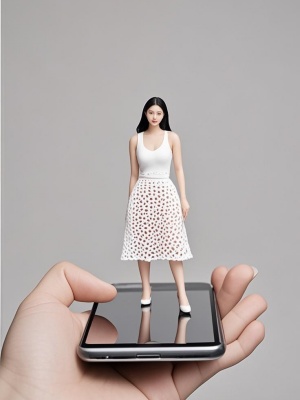The Timeless Allure of Classic Portrait Art
Introduction: The Enduring Legacy of Portrait Art
Classic portrait art represents one of humanity's most enduring artistic traditions, capturing not just physical likenesses but the very essence of individuals across centuries. From Renaissance masters to 19th-century virtuosos, portrait artists have developed sophisticated techniques to immortalize their subjects in oil, charcoal, and other media.
Today, while modern AI art techniques offer new possibilities, the classical portrait remains unmatched in its ability to convey depth of character and psychological insight. This article explores the rich history, techniques, and contemporary relevance of this venerable art form.
The Historical Evolution of Portrait Art
From Ancient Roots to Renaissance Mastery
The history of portrait art stretches back to ancient civilizations. Egyptian funerary portraits, Roman busts, and Byzantine icons all contributed to the development of portrait traditions. However, it was during the Renaissance that portrait art achieved new heights of realism and psychological depth.
- Early Renaissance: Artists like Jan van Eyck pioneered oil painting techniques
- High Renaissance: Leonardo da Vinci's Mona Lisa set new standards
- Baroque Era: Rembrandt's introspective portraits revolutionized the form
The Golden Age of Portraiture
The 18th and 19th centuries saw portrait art flourish across Europe and America. Key developments included:

- The rise of middle-class patrons beyond just royalty and nobility
- Technical innovations in pigments and brushes
- New approaches to composition and lighting
Master Techniques in Classical Portraiture
Traditional portrait artists developed sophisticated methods to achieve their remarkable results. Many of these techniques remain relevant today, even in digital portrait creation.
The Problem-Solution Matrix of Portrait Challenges
| Challenge | Classical Solution | Modern Adaptation |
|---|---|---|
| Capturing Likeness | Grid measurement systems | Digital proportion tools |
| Skin Texture | Glazing techniques with thin oil layers | Texture brushes in digital painting |
| Eye Expression | Precise highlight placement | AI-assisted emotion analysis |
The Contemporary Relevance of Classic Portraits
In our digital age, classical portrait techniques continue to influence modern art forms. Many contemporary portrait artists combine traditional methods with new technologies to create hybrid works.
Key areas where classical portraiture remains relevant include:

- Art education and foundational drawing skills
- Photographic portrait composition
- Digital painting techniques
- Character design for animation and gaming

Conclusion: The Timeless Value of Portrait Mastery
Classic portrait art represents more than just a historical art form - it embodies fundamental principles of human observation, technical mastery, and emotional expression that remain vital today. As noted by the National Portrait Gallery in London, "A great portrait captures both the sitter's era and timeless human qualities."
For those interested in exploring portrait techniques further, resources like the National Portrait Gallery and Metropolitan Museum of Art offer excellent collections and educational materials. Whether through traditional media or modern digital tools, the art of portraiture continues to evolve while maintaining its essential connection to human expression.